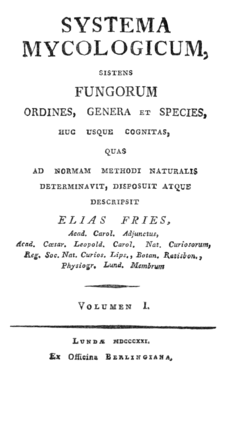
Systema Mycologicum is a systematic classification of fungi drawn up in 1821 by the Swedish mycologist and botanist Elias Fries. [1] It took 11 years to complete.

Systema Mycologicum is a systematic classification of fungi drawn up in 1821 by the Swedish mycologist and botanist Elias Fries. [1] It took 11 years to complete.